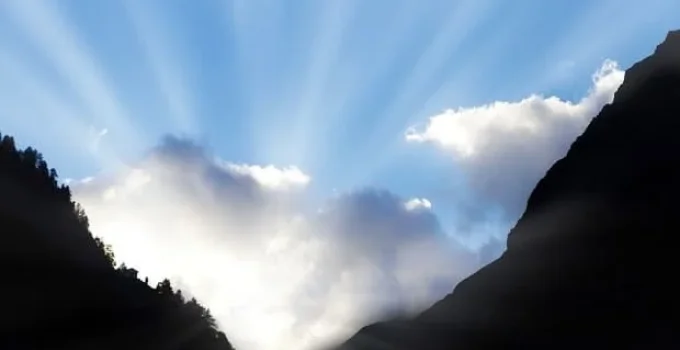How Do Clouds Form?
If you’ve ever watched clouds float across the sky, you might have wondered how they get there in the first place. Clouds form when invisible water vapor in the air turns into visible water droplets or ice crystals. This change happens when warm, moist air rises into the sky, cools down, and reaches its dew point—the temperature at which air can no longer hold all its moisture. That’s when condensation happens, and a cloud begins to form.
🌐 Dive Deeper
- What Is the Process of Cloud Formation?
- What Helps Clouds Form in the Atmosphere?
- Where in the Sky Do Clouds Form?
- Can Humans Influence Cloud Formation?
- 🎯 Final Thoughts
- 📚 References
🌡️ What Is the Process of Cloud Formation?
Cloud formation begins with the water cycle, which includes evaporation, condensation, and precipitation. Here’s how it works step-by-step:
- Evaporation
The sun heats up water in rivers, lakes, oceans, and even puddles. This turns the liquid water into water vapor (a gas), which rises into the atmosphere. - Rising Air
Warm air rises because it’s less dense than cold air. As it rises, it carries water vapor with it. - Cooling
The higher the air goes, the cooler it gets. For every 1,000 feet (about 300 meters) you go up, the air temperature drops by around 3.5°F (2°C). - Condensation
When the air cools to its dew point, the water vapor turns back into tiny liquid water droplets or ice crystals. This process is called condensation, and it’s what forms a cloud. - Cloud Formation
The water droplets or ice crystals cluster around tiny particles like dust, smoke, or salt in the air. These particles are called condensation nuclei, and without them, clouds couldn’t form.
🌡️ Quick Fact:
A typical cloud forms at about 2,000 to 7,000 feet (600 to 2,100 meters) above the ground, depending on temperature and humidity.
☁️ What Helps Clouds Form in the Atmosphere?
Certain conditions make cloud formation easier or more likely:
- Humidity – The more moisture in the air, the more likely clouds will form.
- Rising Air – Caused by things like:
- Mountains forcing air upward
- Warm ground heating the air above it
- Weather fronts (where warm and cold air meet)
- Cool Temperatures – Cooler air can’t hold as much moisture, so it encourages condensation.
| Factor | Role in Cloud Formation |
|---|---|
| Water vapor | Supplies moisture |
| Rising air | Moves moisture upward |
| Cooling temperatures | Causes condensation |
| Dust and particles | Nuclei for water droplets to form on |
🗺️ Where in the Sky Do Clouds Form?
Clouds form in the troposphere, which is the lowest layer of Earth’s atmosphere. That’s where weather happens. Based on their height, clouds are classified into three main levels:
- Low-level clouds (0–6,500 ft) – Example: Stratus, Cumulus
- Mid-level clouds (6,500–20,000 ft) – Example: Altostratus
- High-level clouds (above 20,000 ft) – Example: Cirrus
Some large storm clouds, like cumulonimbus clouds, can stretch through all three layers!
🌍 Can Humans Influence Cloud Formation?
Yes! Humans can influence cloud formation in a few ways:
- Air pollution adds more dust and particles into the air. These act as extra condensation nuclei, possibly increasing cloud formation.
- Urban areas can heat the air and increase evaporation.
- Cloud seeding is a weather modification technique where airplanes spray substances like silver iodide into clouds to encourage rain or snow.
📊 Interesting Stat:
According to NASA, clouds cover about 67% of Earth’s surface at any given time, playing a major role in the planet’s weather and climate.
🎯 Final Thoughts
So, how do clouds form? The answer is a mix of rising air, cooling temperatures, and condensation. Clouds begin their journey when water vapor rises and cools, then turns into droplets or ice crystals that cling to tiny particles in the air. This natural process happens every day all around the world and helps drive our weather systems—from sunny skies to thunderstorms. Next time you look up and see a cloud, remember you’re watching science in action!
📚 References
- NOAA National Weather Service. “How Do Clouds Form?” https://www.weather.gov/jetstream/cloudformation
- NASA Earth Science. “The Water Cycle.” https://pmm.nasa.gov/education/water-cycle
- National Geographic Education. “Clouds and Precipitation.” https://education.nationalgeographic.org/resource/clouds-and-precipitation
- Met Office UK. “How Are Clouds Formed?” https://www.metoffice.gov.uk/weather/learn-about/weather/types-of-weather/clouds/how-are-clouds-formed
